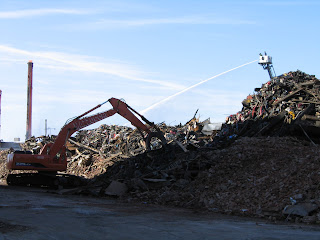Many of you know one of our main issues is protecting yourself and your family from the contaminants that you can be exposed to in
construction work (including remodeling, restoration, or renovation work). In our classes, we discuss the
USA Today Special Report in 2000 "Workers unwittingly take home
toxins". This report discusses how workers through the years have been exposed to toxins and brought them home to contaminate their families. Contaminates included asbestos, lead, mercury, radiation, animal growth hormones,
dry cleaning chemicals, explosive toxins and carcinogens. It has been our opinion for years, that the standard safety equipment for
construction workers should also include disposable clothing or uniforms, that are left at the jobsite, and
respirators. This would be in addition to the typical hard hat, reflective vests, and safety shoes. The new silica standard, if it goes through, will be interesting since it will probably require respirators for workers performing dusty tasks.
We have also discussed, in our classes, the
emergency workers who worked at the
Ground Zero site and all the different toxins they were exposed to like: asbestos, lead, dioxin,
volatile organic compounds (VOCs), mercury, silica, polycyclic aromatic hydrocarbons (
PAHs) and polychlorinated biphenyls (
PCBs). Some of these workers are so sick that we had to provide special medical coverage through the
Zadroga Bill, costing the US billions of dollars.
To further prove our point, a recent
Morbidity and Mortality Weekly Report (MMWR) News Synopsis for January 2, 2014 discussed a Histoplasmosis Outbreak Associated with the Renovation of an Old House in
Quebec Canada. Histoplasmosis is a respiratory disease caused by the inhalation of fungus spores excreted by bats and birds, that can persist in the environment for several years. Outbreaks can occur during demolition/renovation activities that create dust containing bird or bat droppings. The MMWR outbreak happened during the renovation of an old house, 30 workers and residents were exposed to dust containing bird or bat droppings previously hidden in the brick walls. 14 of the workers/residents developed symptoms of histoplasmosis. Of the four who were laboratory-confirmed, two were hospitalized. Unfortunately, stories like this keep happening over and over, again.





